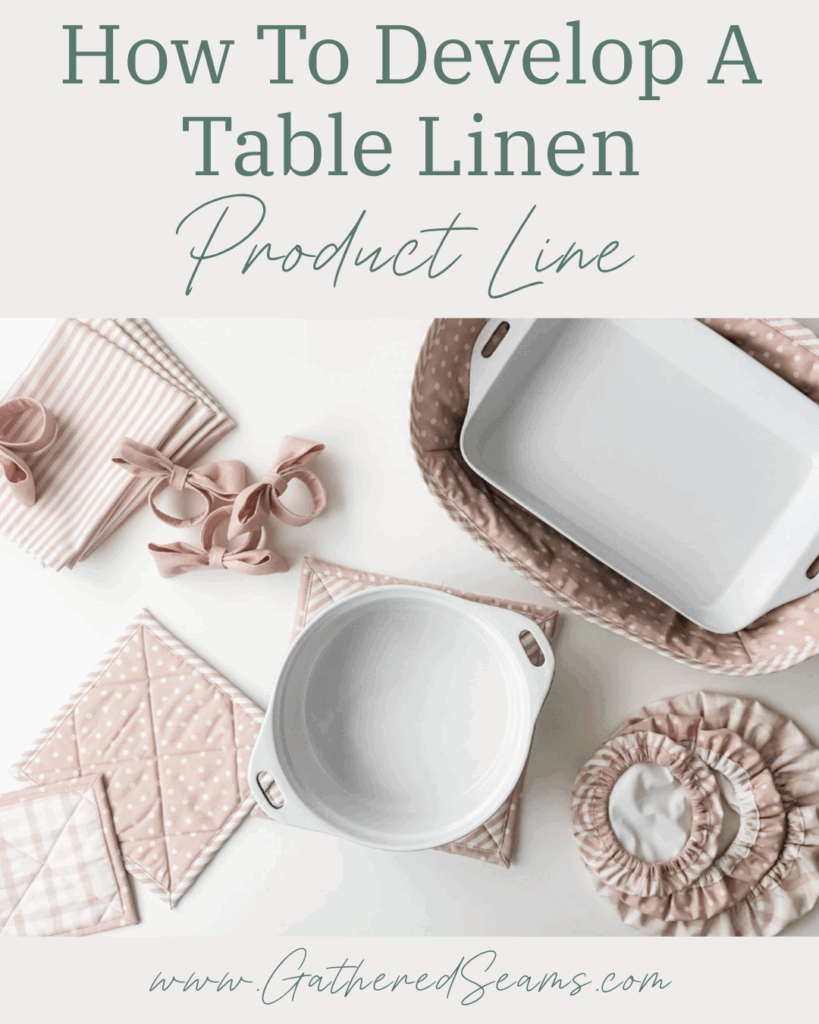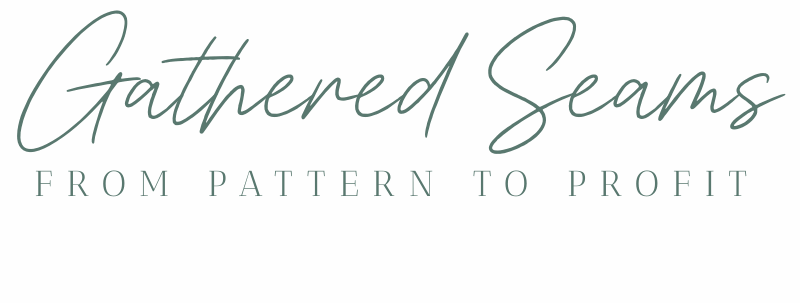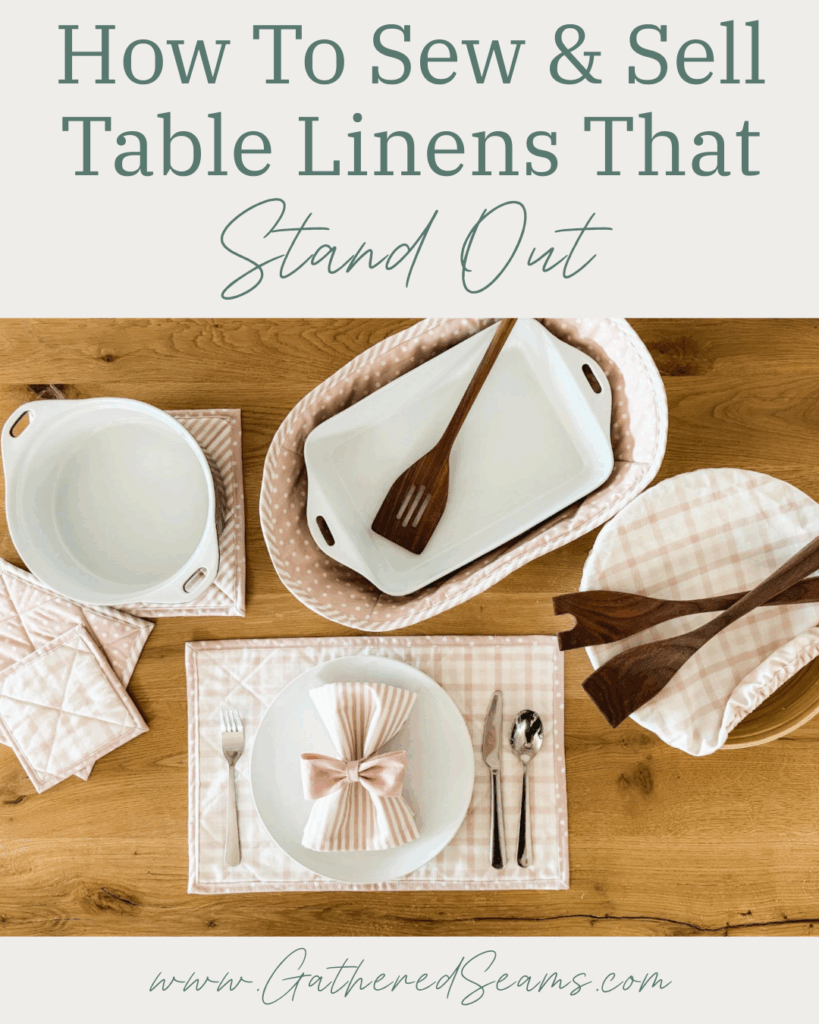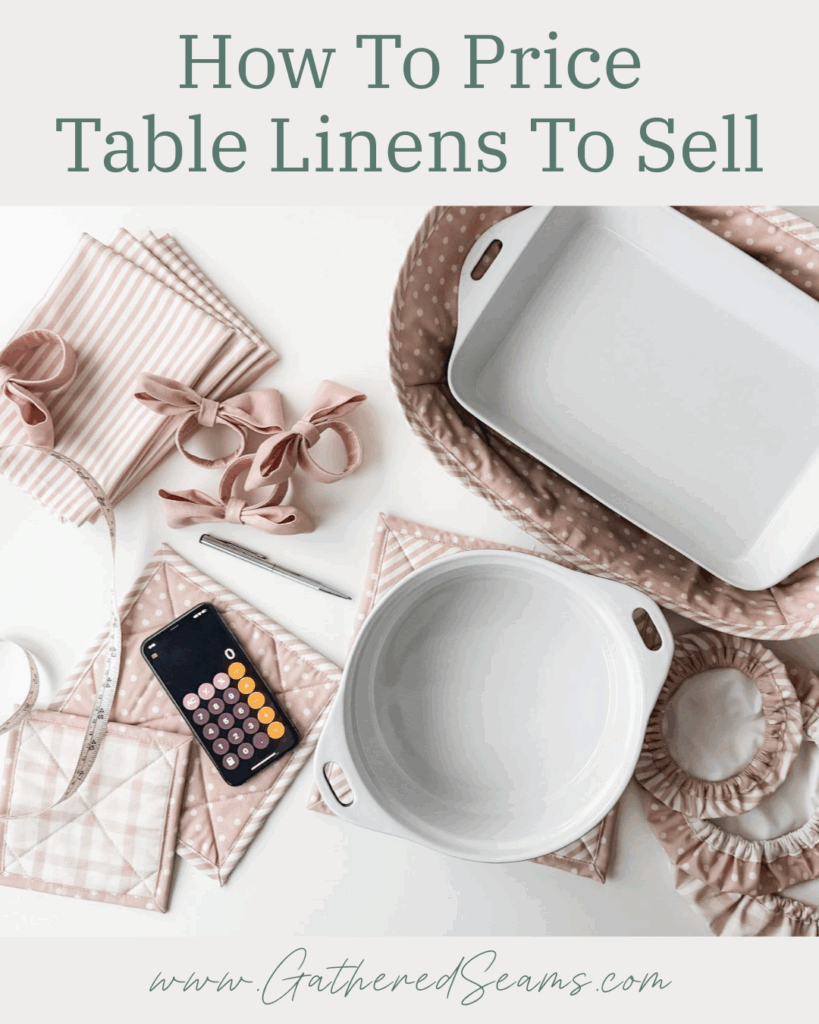Product Line Glossary
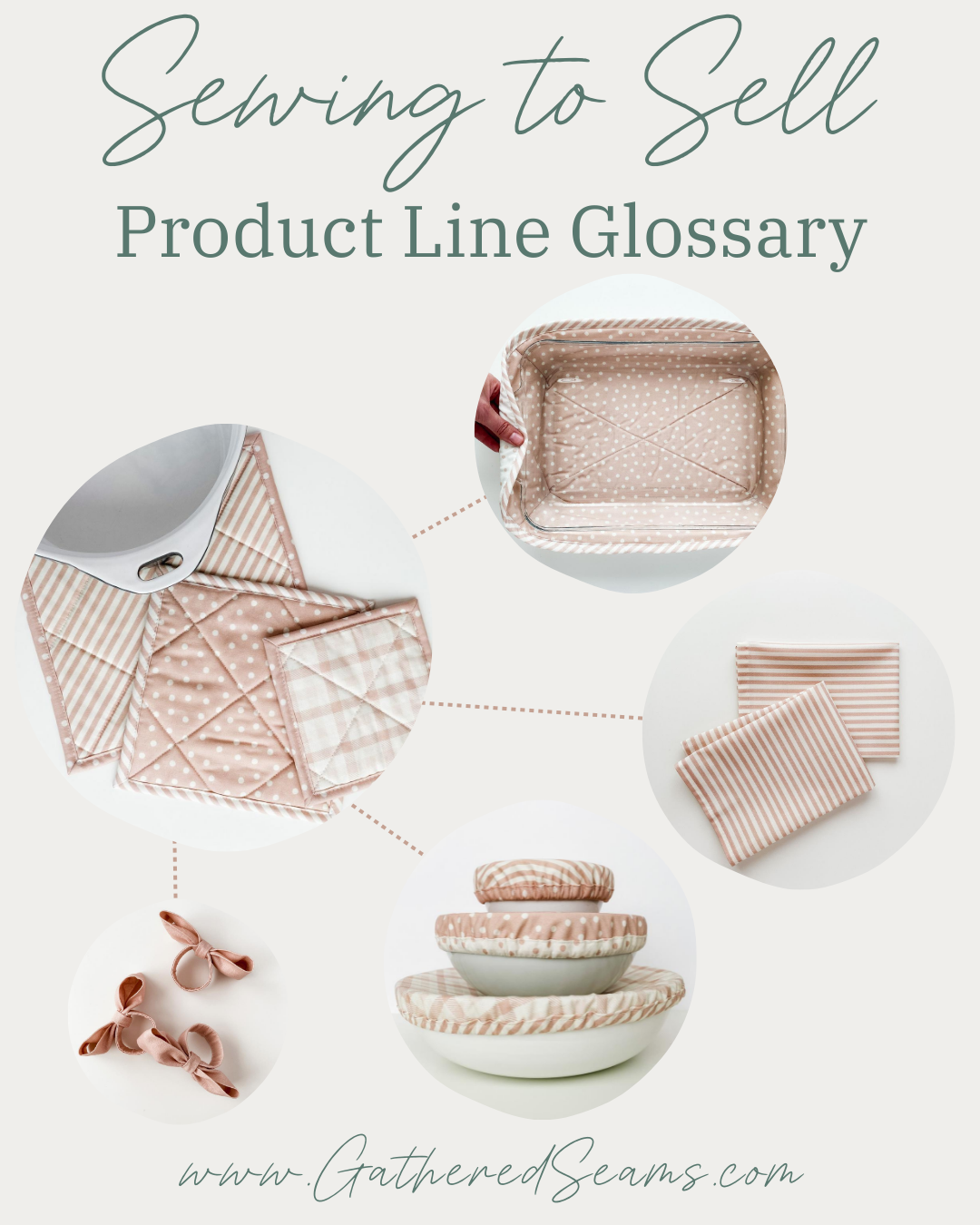
When developing a product line for your sewing business, it’s important to design with purpose.
You shouldn’t randomly create a bunch of different products; each product should work together and have a purpose to maximize sales and better serve your target market.
Each type of product in a product line should help to:
- offer different price points
- address different customer needs
- appeal to different buying behaviours
Core Products
Price range: Mid – High
Your core products will be the main products that take up the majority of your craft show table or online store, and be what you want your business to be known for.
For a small handmade business, you likely only need 1 – 3 core products.
These are your proven bestsellers.
If you don’t yet have sales stats to work with, you may plan for your core products to be the more highly desirable/popular products with consumers.
Example:
- Core products: oven mitts, aprons, and tea towels
Those are common household products and are ideal for being my product line’s core products.
Fewer people are familiar with reusable bowl covers and casserole cozies, so they may not be as popular of an item in my lineup.
If, after selling at several craft shows, my sales stats show that my bowl covers and cozies are more popular, I’d adjust my product line and make those my core products.
Add-on Products
Price Range: Mid – Low
These products are designed to work with one or more of your core products so people want to add them to their order.
They should be lower priced so that it’s an easy decision to add them to a purchase.
Think about the shoe cleaners and protectors that are suggested to you when buying a new pair of shoes. You didn’t come into the store looking for a shoe cleaner, but when you’re spending $50+ on a new pair of shoes, spending an extra $10 to protect them is an easy choice to make.
Example:
- Core products: aprons, oven mitts, and tea towels
- Add-on products: hot pads, cone pot pinchers, skillet handle sleeves, and dishcloths
The individual hot pads probably don’t bring shoppers to my craft show table/online store, but when they see a hot pad that matches the apron or oven mitts they’ve picked out, they may want to add it to their order.
If someone has a set of tea towels in their cart, they may see the coordinating dishcloths and decide to buy them too.
Upsell Products
Price range: High
These are the highest-priced products in your line because they offer all the bells and whistles. They take one of your core products and upgrade it.
You can also introduce new products for your upsells, which may simply be the more expensive items in your line.
Example:
- Upsell products (upgraded): half apron, items in better quality materials (e.g. linen), items with more details (e.g. ruffle or bow details)
- Upsell products (new): casserole cozies
Entry-Level Products
Price range: Low
These are lower-priced products, similar to add-on products. However, add-on products are designed to be added to an order, whereas an entry-level product can be purchased and used on its own.
Your entry-level products and add-on products may be the same, depending on what you make.
The difference is in how they’re presented.
Entry-level products should feel complete on their own and be an item that can be used on its own.
For example, in a shoe store, shoe protector would be an add-on item, but it isn’t a great entry-level product because most people don’t walk into a shoe store looking for a new pair of shoes, and settle for buying shoe protector until they can afford the shoes they want.
On the other hand, they might settle for a faux leather pair of shoes until they can afford the high-end leather shoes. So the faux leather shoes would be a good entry-level product.
Example:
- Core products: aprons, oven mitts, and tea towels
- Add-on products: hot pads, cone pot pinchers, skillet handle sleeves, and dishcloths
- Upsell products: casserole cozies and products in better quality materials (e.g. main line is cotton, upsell items are linen)
- Entry-level product: coasters, hot pads, and bowl covers
When hot pads are positioned as an add-on product, they may be sold individually and displayed/photographed with the matching oven mitts.
When hot pads are positioned as an entry-level product, they may be sold in a pair or set so they feel like a complete purchase on their own.
.
Bundled products
Price range: high
You can take 3 – 5 products that work well together and group them into a package.
For example:
- Kitchen Starter Set: Matching apron, oven mitts, and tea towel
- Tea towel set: 3 coordinating tea towels
- Baker’s Gift Set: Apron, oven mitts, cookie sheet hot pad, bowl covers, reusable cookie bags
When you bundle products together, it makes it easier for shoppers to buy more than one item and offers an incentive to do so.
Often, bundled items are slightly discounted. A customer buying 3 items may warrant a slight discount over someone buying one item is because they’re raising your UPT (units per transaction) and reducing your costs.
- Instead of having to pay 3 transaction fees (for 3 different customers buying one item each), you’re paying one transaction fee
- Instead of using 3 shopping bags/shipping boxes, you’re using one.
- Instead of spending time completing 3 separate transactions/shipping 3 separate orders, you’re only completing 1.
Bundles don’t always need to be discounted, but there should be some perk.
For example, the bundled items might be packaged in a beautiful gift box.
Limited Edition
It’s a good marketing strategy to offer temporary products in your line. Think of how many more people buy a coffee from Starbucks when their “available for a limited time” Pumpkin Spice flavour launches.
Consider introducing a limited edition product or production collection a few times a year to create interest and urgency.
Example:
- Limited Edition Christmas Bake Set
The same products are offered in a unique and desirable Christmas fabric, and when they’re gone, they’re gone.
Collection
A collection is how you
- add variation to your product line
- offer more options
- appeal to the segments within your target market
- create interest throughout the year
For a small handmade business, having 1 – 5 collections at any given time is ideal.
How many collections you offer depends on your:
- products – some products have more opportunities for creating multiple collections, while others don’t. For example, if I sew items using leather, I don’t have as many materials, colors, or detailing (e.g. adding ruffles) that I can play with.
- product line – if I only have a 3 products in my product line, I may have the room to develop more collections. On the other hand, if I have 10 types of products in my product line, I may want to limit how many collections I offer so my workload and craft show table/shop don’t become too full.
- target market – consider how your target market shops. For example, if I’m selling table linens to people who love to host dinner parties, I know my target market probably likes to update their table linens for each holiday and/or season.
Once you determine how many collections you’ll offer at once, then you can determine how many times throughout the year you’ll launch a new collection/collections.
For example:
If I’m selling cottagecore table linens, I may offer:
- a floral collection
- a stripe collection
- a solid collection
I would have 3 collections at the same time.
Then I may decide to launch a new collection for:
- Spring – Focus on pastel colors for my 3 collections (floral, stripe, and solid)
- Summer – Focus on yellow, pink, and green for my 3 collections (floral, stripe, and solid)
- Christmas – Focus on red, green and gold for my 3 collections (floral, stripe, and solid)
You can change any product feature you like to create a collection.
For example:
- color (e.g. pink, blue, beige, different shades of a color, different color combos, etc.)
- material (e.g. cotton, linen, flannel)
- pattern (e.g. polkadots, plaid, stripes)
- details (e.g. ruffles, bows, lace)
- size (e.g. small, medium, large)
- personalization (e.g. non-personalized and monogrammed)
- etc.
Think about what type of options your target market might like to see and how you can create collections for them.
You can get started with a Table Linen Product Line! This article has patterns to build a full line.
